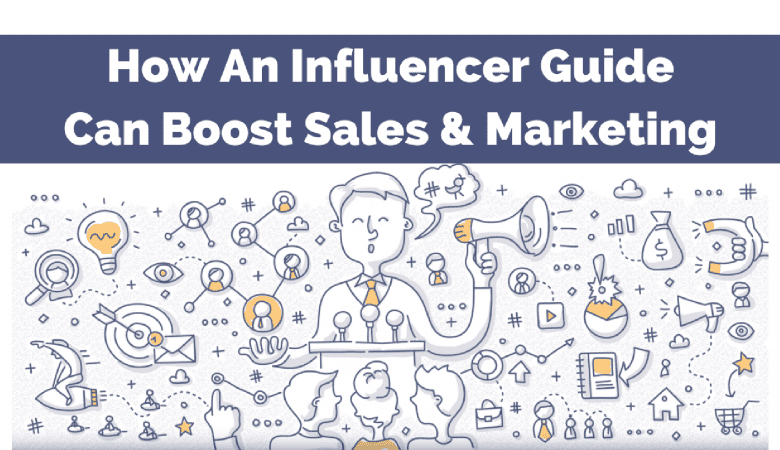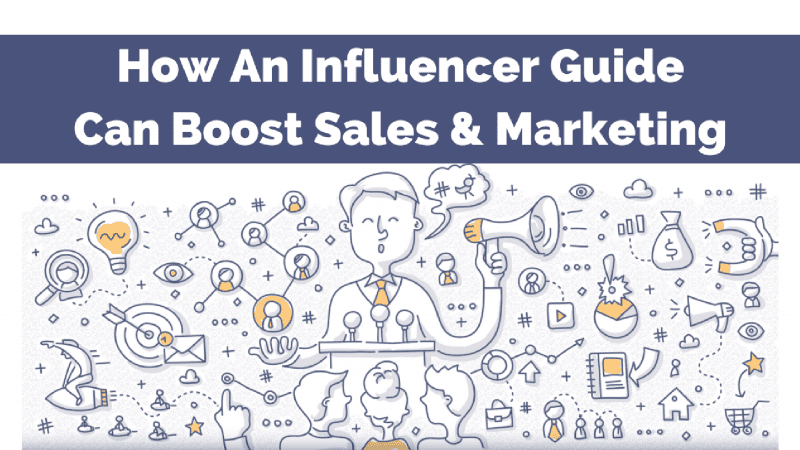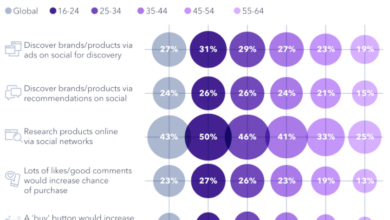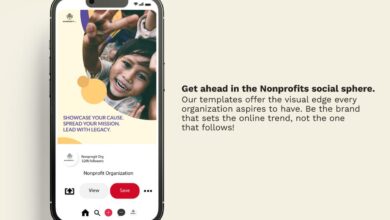
How to Identify Industry Influencers A Guide
How to identify industry influencers is a crucial skill for anyone looking to build a brand or connect with key figures in their field. This guide provides a comprehensive approach, covering everything from defining influence to crafting effective outreach strategies. We’ll delve into the characteristics of influential individuals, explore the platforms they use, and analyze the factors that determine their credibility.
Ultimately, you’ll gain the tools needed to pinpoint the most impactful voices in your industry.
Understanding the various types of influencers, their preferred platforms, and how they engage with their audience is vital. This detailed breakdown will equip you to identify influencers who resonate with your target audience, allowing you to build strategic partnerships and maximize your reach. We’ll also touch upon the importance of assessing an influencer’s credibility and content quality.
Defining Industry Influence
Identifying influential figures within any industry is crucial for strategic marketing and understanding the landscape. Influencers aren’t just celebrities; they represent a diverse range of individuals who shape perceptions, drive trends, and ultimately, impact the success of businesses and brands. This section delves into the multifaceted nature of industry influence, examining different types and roles.Understanding influence requires moving beyond a superficial understanding of popularity.
Influence is a dynamic process where individuals command attention, inspire action, and drive change within a specific industry. This can manifest in numerous ways, from advocating for new technologies to fostering community among consumers.
Defining Industry Influence
Industry influencers are individuals who hold significant sway over a particular industry’s stakeholders, including consumers, businesses, and media. Their impact stems from expertise, knowledge, experience, and strong relationships within the industry. They often possess in-depth understanding of trends, best practices, and emerging technologies, enabling them to shape the industry’s direction.Different types of influence exist within a given industry.
Thought leaders, for example, offer unique insights and perspectives that challenge conventional thinking and spark innovation. Trendsetters, on the other hand, often lead the charge in embracing new technologies or methodologies. Community managers cultivate relationships and build strong communities within an industry, promoting collaboration and knowledge sharing. Each type plays a vital role in shaping the industry’s trajectory.
Examples of Industry Influencer Roles, How to identify industry influencers
Influencers in various roles exhibit different responsibilities. A thought leader might author influential articles, host insightful webinars, or deliver keynote speeches at industry conferences. A trendsetter might be a pioneer in adopting new technologies or methods and sharing their experience publicly. A community manager might organize industry events, foster discussion forums, or moderate online communities, thereby connecting professionals and fostering collaboration.
Figuring out who the real estate heavy hitters are is key to your social media strategy. Look for individuals consistently sharing insightful content about the industry, and actively engaging with other professionals. To maximize your reach, understanding how to effectively use social media for real estate is crucial. This comprehensive guide will help you master the platform and connect with potential clients.
Ultimately, identifying these influencers is the first step towards building a stronger, more impactful online presence in the real estate market.
These diverse responsibilities contribute to the influencer’s overall impact.
Criteria for Identifying an Influencer
Identifying an influencer involves a comprehensive evaluation of various factors. The table below Artikels key criteria, providing a structured approach to assessing influence within a given industry.
Finding key players in your industry, like top hospitality influencers, is crucial. Look for people consistently sharing valuable insights and engaging with their followers. A reliable social media management strategy, like the one discussed in reliable social media management for hospitality industry , can help you identify these individuals, since they’re often active on social media. Ultimately, understanding who’s influential in your niche is a key part of any successful social media strategy.
| Criteria | Description | Example | Weighting |
|---|---|---|---|
| Expertise | Demonstrated knowledge and skills within the industry. | A software engineer with 15+ years of experience in AI development. | High |
| Reach | Number of followers, subscribers, or audience members. | A social media influencer with 1 million followers. | Medium |
| Engagement | Level of interaction with the audience (likes, comments, shares). | A blogger with numerous comments and shares on their posts. | High |
| Authority | Reputation and credibility within the industry. | A recognized professor in a relevant field. | Very High |
| Impact | Effect on industry trends, discussions, and decision-making. | A company CEO leading a new initiative. | Very High |
Comparing Different Types of Influencers
This table contrasts different types of influencers, highlighting their key characteristics.
| Type | Thought Leader | Trendsetter | Community Manager |
|---|---|---|---|
| Focus | Knowledge, insights, and perspectives | New technologies, methods, and innovations | Building and fostering communities |
| Primary Activities | Publishing research, delivering presentations, and writing articles. | Implementing new technologies, leading workshops, and demonstrating applications. | Organizing events, moderating forums, and facilitating communication. |
| Impact | Driving innovation and changing industry perceptions. | Shaping industry adoption of new technologies and methods. | Strengthening industry relationships and collaboration. |
Identifying Influencer Platforms
Finding the right industry influencers isn’t just about knowing who they are, but also where they’re active online. Understanding the platforms influencers use is crucial for targeting your outreach effectively. This knowledge allows you to focus your efforts on the channels most likely to yield positive results. It also helps you craft messages tailored to the specific platform’s nuances and audience.Influencers utilize various online platforms to build their presence and connect with their audience.
Their choice of platform often reflects their personal style, the nature of their content, and the preferences of their followers. Understanding these factors is vital to finding influencers who resonate with your brand and target audience.
Common Influencer Platforms
Various online platforms serve as crucial hubs for industry influencers to engage their audiences and establish their expertise. Choosing the right platform is essential for reaching the right target audience. Each platform has its unique strengths and weaknesses, and understanding them is key to effective influencer identification.
- Social Media Platforms: These platforms offer a wide range of tools for building and maintaining a strong online presence. They are crucial for engaging audiences through visual content, interactions, and building communities. Examples include Twitter, Instagram, Facebook, and TikTok.
- Professional Networking Sites: These platforms, like LinkedIn, are particularly valuable for B2B influencers and professionals aiming to connect with industry peers and potential clients. They are ideal for sharing industry insights, establishing thought leadership, and expanding professional networks.
- Video Sharing Platforms: YouTube stands out as a platform where influencers can showcase their expertise through tutorials, reviews, interviews, and engaging video content. This approach allows for a deeper connection with audiences who prefer visual learning and engagement.
- Blogging Platforms: Blogs offer influencers a platform to share in-depth knowledge and analysis on specific industry topics. This is valuable for those seeking detailed information and perspectives.
Platform Selection Significance
The choice of platform significantly impacts the effectiveness of influencer identification. Influencers often specialize in particular platforms and tailor their content to the specific strengths of that platform. This specialization and content focus allows for targeted outreach.
- Targeted Reach: By understanding which platform an influencer primarily uses, you can more effectively target your message to the right audience. For example, a B2B influencer active primarily on LinkedIn is more likely to connect with business professionals than a lifestyle influencer on Instagram.
- Content Alignment: The type of content an influencer typically shares aligns with the platform’s strengths. For example, a visual platform like Instagram benefits from visually engaging content, while detailed information thrives on a blog platform.
- Audience Engagement: Influencers often cultivate a specific audience on each platform. Understanding these audience characteristics enables a more precise identification process.
Platform Characteristics and Strengths
The following table Artikels key characteristics and strengths of different influencer platforms. This table provides a useful reference for understanding the nuances of each platform.
| Platform | Strengths | Target Audience | Typical Content |
|---|---|---|---|
| Real-time updates, quick engagement, broad reach | Individuals seeking quick news, updates, and opinions | Short-form posts, news updates, opinions, and discussions | |
| Professional networking, thought leadership, industry insights | Business professionals, executives, and industry experts | Articles, industry news, career advice, and thought leadership pieces | |
| YouTube | Visual learning, in-depth content, detailed explanations | Individuals who prefer visual content, tutorials, and reviews | Tutorials, reviews, interviews, and explanations |
| Visual storytelling, aesthetic appeal, strong community engagement | Individuals interested in visual content, aesthetics, and trends | High-quality images and videos, stories, and trends |
Evaluating Influencer Engagement

Understanding influencer engagement is crucial for determining an influencer’s genuine reach and impact. It’s not just about the number of followers; it’s about how actively those followers interact with the influencer’s content. This analysis reveals the authenticity of their audience connection and the potential for successful collaborations.Analyzing engagement metrics helps marketers assess the effectiveness of influencer campaigns. By understanding how followers respond to content, brands can refine their strategies and maximize ROI.
Strong engagement indicates a passionate and responsive audience, a valuable asset for any brand looking to connect with consumers.
Engagement Metrics Across Platforms
Different social media platforms have varying engagement norms. Instagram, for example, relies heavily on likes and comments, while Twitter emphasizes retweets and replies. Understanding these platform-specific dynamics is essential for accurate evaluation. A high number of likes on Instagram might not translate to a similar level of engagement on Twitter. Therefore, it’s critical to evaluate engagement metrics within the context of the specific platform.
Figuring out who the key players are in your industry is crucial. Look for individuals with a strong online presence and a dedicated following. Checking out their social media engagement, particularly for social media post ideas for ecommerce stores, is a good place to start. Social media post ideas for ecommerce stores can be a great way to engage and grow your own following, and in turn, help you identify those influencers.
Ultimately, the goal is to find those thought leaders who can help boost your brand’s visibility and authority.
Identifying Patterns and Trends in Engagement
Analyzing engagement data isn’t just about looking at individual metrics. It’s about recognizing patterns and trends over time. Are engagement rates increasing or decreasing? Are certain types of content performing better than others? This trend analysis can highlight the influencer’s strengths and weaknesses, providing insights for future content creation.
By identifying patterns, marketers can tailor their strategies to resonate better with the influencer’s audience. For instance, a consistent increase in comments on a particular type of post could indicate a strong interest in that specific topic.
Examples of Engagement Metrics and Their Interpretation
Engagement metrics are quantifiable measures of audience interaction. They provide valuable insights into how well an influencer connects with their followers. Likes, comments, shares, and retweets are common metrics, each providing unique information about the audience’s response to the influencer’s content. A high number of likes might simply indicate general approval, while a significant number of comments suggests active engagement and deeper interest.
Engagement Metrics Table
| Metric | Description | Interpretation |
|---|---|---|
| Likes | The number of users who indicate approval of a post. | High likes suggest broad appeal and general interest, but may not always indicate deep engagement. |
| Comments | The number of written responses to a post. | Comments show active participation and deeper engagement with the content. A higher number indicates a greater level of audience interaction and discussion. |
| Shares | The number of times a post is shared to other users’ feeds. | Shares indicate strong endorsement and a desire to spread the message to others. A high share count indicates widespread interest and the influencer’s ability to generate buzz. |
| Retweets (Twitter) | The number of times a tweet is retweeted. | Retweets on Twitter show the content’s virality and how influential the tweet is considered by others. High retweets signify significant resonance with the target audience. |
Assessing Influencer Credibility and Authority
Uncovering the genuine impact of an influencer goes beyond simply counting followers. Authentic influence hinges on credibility and authority, which are earned through demonstrated expertise and a proven track record of delivering value to their audience. Understanding how to evaluate these crucial aspects is vital for identifying genuine industry leaders and avoiding misleading figures.
Importance of Evaluating Influencer Credibility
Influencer credibility is paramount in ensuring the effectiveness of any marketing strategy or partnership. A credible influencer has earned the trust of their audience, leading to higher engagement and conversion rates. Conversely, a lack of credibility can result in diminished trust and a negative impact on brand image. Authenticity and transparency are key elements in building this credibility.
Influencers who consistently deliver on their promises and demonstrate genuine expertise are more likely to build lasting relationships with their audience and command a greater level of trust.
Determining Influencer Authority within a Niche
Influencers who hold authority in their niche have a deep understanding of the subject matter and are recognized as experts. This authority can be established through various avenues, including publications, presentations, and collaborations with other industry leaders. Analyzing their presence across different platforms, assessing the quality of their content, and looking at their engagement with other influencers are key steps in evaluating their authority.
The depth of their knowledge and the consistency of their expertise contribute significantly to their perceived authority.
Assessing Influencer Expertise and Knowledge
Evaluating an influencer’s expertise and knowledge requires a critical eye. Look for evidence of their learning journey, whether through certifications, academic achievements, or years of practical experience. A strong understanding of industry trends and insights can also signal a high level of expertise. Check for a consistent history of providing valuable content and insights. Thorough research into their educational background, publications, and industry involvement can provide concrete evidence of their knowledge base.
Indicators of Influencer Authority and Credibility
Several key indicators point to an influencer’s authority and credibility. These factors are crucial in distinguishing between genuine experts and those who may be overstating their expertise.
- Consistent and High-Quality Content: Influencers who consistently deliver valuable, informative, and well-researched content demonstrate a commitment to their audience and establish themselves as experts. Content should align with their niche, showcase expertise, and address audience needs.
- Engagement Metrics: High engagement rates (likes, comments, shares, and responses) indicate audience interaction and validation of the influencer’s content. A significant following isn’t always a reliable metric; engagement reveals genuine audience interest.
- Industry Recognition: Awards, mentions in reputable publications, and invitations to industry events showcase the influencer’s standing and recognition within their niche.
- Professional Background and Experience: An influencer’s professional background, experience, and credentials can provide insights into their knowledge and expertise. Look for industry certifications, relevant roles, and publications.
- Community Engagement: Influencers who actively participate in online communities, forums, and discussions demonstrate their involvement and commitment to the industry.
Researching Influencer Background and Experience
Thorough research into an influencer’s background and experience is essential to gauge their credibility. Investigate their previous roles, accomplishments, and any relevant affiliations. Examining their online presence, including social media profiles, personal websites, and blogs, is crucial. A comprehensive review of their history can provide valuable insights into their expertise and experience.
Analyzing Influencer Content: How To Identify Industry Influencers
Influencers aren’t just about followers; their content quality dictates their influence. A compelling and consistent output resonates with their audience, establishing trust and authority. Analyzing this content is a crucial step in identifying high-value influencers. Understanding the types of content they produce and how they engage with their audience reveals insights into their effectiveness and appeal.Effective influencer content goes beyond mere promotion; it fosters genuine connections.
It provides value to the audience through insightful information, entertaining experiences, or helpful advice. This analysis will help you discern influencers who truly understand their niche and connect with their followers authentically.
Evaluating Content Quality and Consistency
Influencer content quality is multifaceted. It encompasses the depth of information, the clarity of presentation, and the overall value delivered to the audience. Consistency is equally important. A predictable output, aligned with their brand identity, cultivates audience trust. Influencers who consistently produce high-quality, relevant content are more likely to attract and retain a loyal following.
This includes understanding their target audience and adapting their style to resonate with them.
Identifying Influencers with High-Quality and Relevant Content
Identifying influencers with high-quality content involves a systematic approach. Look for influencers who demonstrate expertise in their field. Check for evidence of thorough research and a clear understanding of the subject matter. Assess if the content aligns with the needs and interests of their target audience. Genuine enthusiasm and passion for the topic are often apparent in engaging content.
In short, quality content is a result of deep understanding and a strong connection with the target audience.
Examples of Content Formats and Their Impact on Audience Engagement
Various content formats can significantly impact audience engagement. Visual content, such as high-quality images and videos, often captures attention more effectively than text-heavy posts. Infographics and short explainer videos can be particularly effective for conveying complex information concisely. Live streams, Q&A sessions, and interactive polls create a sense of community and allow for direct engagement with the audience.
- Video content: Short, engaging videos, particularly those with clear visuals, often have a high engagement rate. This is due to the combination of visual appeal and concise information delivery. Examples include product demos, tutorials, and behind-the-scenes glimpses into the influencer’s life.
- Blog posts and articles: These offer in-depth information, often establishing the influencer as an authority. High-quality writing, well-researched facts, and clear calls to action are key elements. These are typically more engaging for those seeking comprehensive information.
- Interactive content: Live streams, polls, quizzes, and Q&A sessions create an active environment. This fosters a sense of community and allows for direct audience interaction, strengthening engagement.
Content Format Comparison
| Content Type | Description | Engagement Potential |
|---|---|---|
| High-Quality Images/Videos | Visually appealing content that can quickly capture attention. | High, especially for products or services with visual appeal. |
| Blog Posts/Articles | In-depth information and analysis; often used to establish authority. | Moderate to High, depending on the writing quality and audience interest. |
| Interactive Content (Live streams, Polls, Q&A) | Content that fosters direct engagement and a sense of community. | High, particularly for building a strong relationship with the audience. |
Exploring Influencer Networks and Communities

Connecting with influencers isn’t just about finding individuals; it’s about tapping into the vibrant ecosystem they inhabit. Understanding their networks and communities reveals valuable insights into their audience’s preferences and allows for strategic partnerships. This understanding can significantly amplify your brand’s reach and message resonance.Influencer networks and communities are more than just groups of people. They’re interconnected hubs of influence, where ideas circulate, trends emerge, and relationships are forged.
These communities are vital for brand awareness because they act as powerful amplifiers for your message. An influencer’s endorsement within their community carries significant weight, often translating into immediate and measurable brand exposure.
Significance of Influencer Networks in Building Brand Awareness
Influencer networks, comprised of like-minded individuals and groups, offer a powerful avenue for brand visibility. Their shared interests and values create a potent environment for message amplification. This amplified reach translates into increased brand awareness and a deeper connection with the target audience.
Identifying Influencers in Relevant Communities
To find influencers who are actively engaged in relevant communities, one must look beyond simple follower counts. Engagement is key. Look for individuals who are not just posting, but actively participating in discussions, responding to comments, and fostering relationships within the community. These are the individuals who genuinely connect with their audience and, consequently, are more likely to promote your brand authentically.
Resources for Discovering Industry-Specific Communities
Numerous platforms offer avenues to discover industry-specific communities. Online forums, social media groups, and specialized online communities are valuable resources. Participating in these groups allows you to identify influencers, understand industry trends, and potentially collaborate with key players.
- Industry-specific forums: These specialized forums often house discussions and conversations pertinent to a particular industry. They are a treasure trove of information and can help identify influencers who actively participate in the discussions, providing insights into industry trends.
- Social media groups: Facebook groups, LinkedIn groups, and other social media groups dedicated to specific industries provide a direct line to the target audience and potential influencers. Engagement in these groups is critical to identifying influencers who genuinely interact with their audience.
- Specialized online communities: Dedicated online communities focused on specific industries can be excellent resources for finding influencers and connecting with potential collaborators. These communities are often curated and provide a unique opportunity for engagement.
Value of Exploring Influencer Relationships and Collaborations
Examining the relationships between influencers and their followers offers insights into the influencer’s community dynamics. Understanding the nature of these connections can inform strategic partnerships and collaborations, maximizing their impact. This is a crucial aspect of identifying influential voices who can authentically represent your brand.
Understanding the Influencer’s Community
Understanding the nuances of the influencer’s community is essential. This includes recognizing their shared values, interests, and concerns. This knowledge allows you to tailor your messaging and approach, ensuring that the collaboration resonates with their audience and enhances brand authenticity. An understanding of the community provides a deeper level of insight, enabling a more successful partnership.
Identifying Influencer Outreach Strategies
Reaching out to influencers effectively is crucial for successful campaigns. It’s not just about sending a message; it’s about building genuine relationships and understanding the unique value each influencer brings to the table. This involves tailoring your approach to their specific platform, content style, and audience. A well-defined outreach strategy ensures your message resonates with the influencer and their followers, maximizing your campaign’s impact.
Crafting Personalized Outreach Messages
Influencer outreach isn’t a one-size-fits-all endeavor. Generic messages often fall flat. Instead, craft personalized messages that highlight your understanding of the influencer’s work and demonstrate genuine interest. Mention specific posts, campaigns, or aspects of their content that you admire. This personal touch shows you’ve done your research and are not just another brand looking for a quick collaboration.
A well-researched message that showcases genuine interest is far more likely to yield a positive response.
Choosing the Right Outreach Channels
Different platforms require different approaches. Direct messaging on Instagram might be ideal for smaller creators, while a carefully crafted email might be more suitable for established personalities on platforms like LinkedIn. Understanding the nuances of each platform is key to ensuring your message is seen and not lost in the noise.
Outreach Methodologies
| Approach | Description | Example |
|---|---|---|
| Direct Messaging | Short, personalized messages via the platform’s direct messaging feature. | “Hi [Influencer Name], I really enjoyed your recent post on [topic]. Your insights on [specific point] were particularly insightful. We’re working on a campaign related to [topic] and believe your audience would be a great fit. Would you be open to a quick chat?” |
| Formal, detailed emails outlining the campaign and highlighting the influencer’s specific value to the brand. | “Subject: [Campaign Name]
|
|
| Social Media Engagement | Engaging with the influencer’s content, commenting on their posts, and sharing their work. | Actively liking, commenting on, and sharing posts from the influencer’s feed, showcasing genuine interest in their content. |
| LinkedIn Connections and Articles | Networking on LinkedIn, sharing articles relevant to the influencer’s expertise, and commenting on their posts, especially those related to industry trends. | “Sharing articles on [relevant industry topic] that are directly aligned with the influencer’s area of expertise, highlighting their specific insights and knowledge. Then, connecting on LinkedIn and offering value.” |
Building Long-Term Relationships
Successful influencer outreach isn’t a one-time event. Cultivating ongoing relationships fosters trust and opens doors for future collaborations. Regular interaction, even when not actively seeking a collaboration, can strengthen ties and increase the likelihood of a positive response when a new opportunity arises. Follow up with influencers even if they don’t respond immediately.
A proactive and consistent approach builds a stronger foundation for long-term partnerships.
Closing Notes
In conclusion, identifying industry influencers is a multi-faceted process requiring a deep understanding of their platforms, engagement strategies, and credibility. By applying the insights and strategies Artikeld in this guide, you’ll be better positioned to connect with key figures in your industry, fostering valuable relationships and expanding your brand’s reach. Remember, the best influencers are those who genuinely connect with their audience and share valuable insights.
Look for authenticity and consistency in their content, and don’t hesitate to reach out with a thoughtful and personalized message.





